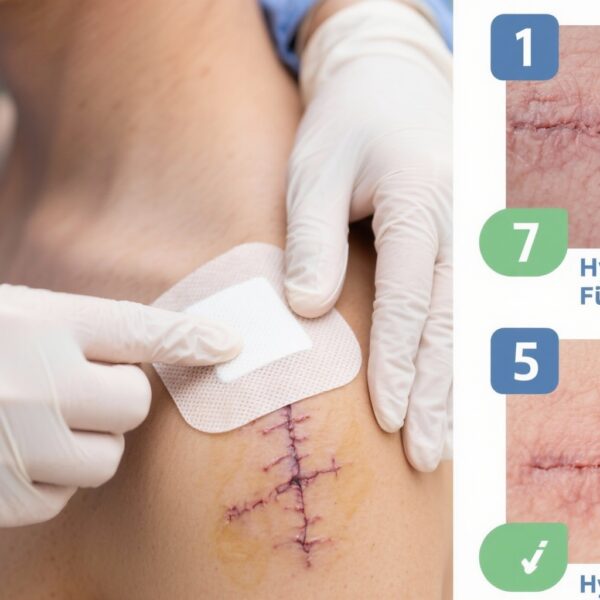Highlight
This retrospective cohort study discovered that specific T-cell receptor beta (TCRB) and gamma (TCRG) clonotypes correlate with aggressive clinical features and decreased overall survival in cutaneous T-cell lymphoma (CTCL), particularly mycosis fungoides (MF) and Sézary syndrome (SS). Notably, clonal Vb20 and Vg8 segments were linked to advanced disease stages, folliculotropism, large-cell transformation, and poorer prognosis. Additionally, higher clonal abundance of TCRG correlated positively with immune checkpoint markers PD-1 and ICOS, suggesting an immunomodulatory milieu in aggressive disease.
Study Background
Cutaneous T-cell lymphomas (CTCL), including the predominant subtypes mycosis fungoides (MF) and Sézary syndrome (SS), represent rare but clinically significant extranodal non-Hodgkin lymphomas characterized by malignant clonal proliferation of skin-homing T cells. Disease progression ranges from indolent patches and plaques to advanced, aggressive forms associated with substantial morbidity and mortality. Histologic features such as folliculotropism and large-cell transformation are known markers of poor prognosis, but molecular correlates that can refine risk stratification are lacking. The T-cell receptor (TCR) repertoire provides insight into the clonality and diversity of malignant T cells. Yet, comprehensive characterization of TCR beta (TCRB) and gamma (TCRG) clonotypes across CTCL stages and subtypes remains limited, hampering the integration of TCR sequencing into routine clinical prognostication and treatment planning.
Study Design
This retrospective cohort study was conducted at City of Hope, Duarte, California, analyzing lesional skin biopsies from 125 patients diagnosed with MF or SS across stages IA to IVB. Samples underwent next-generation sequencing (NGS) to identify TCR beta and gamma gene segments, collected from June 2020 through October 2024. To preserve data integrity, duplicate samples were excluded. Clinical data including disease stage, histologic subtype (classic MF/SS versus folliculotropic or large-cell transformed variants), and survival outcomes were integrated. The study also assessed relationships between clonotype abundance and expression of immune checkpoints programmed cell death 1 (PD-1), inducible T-cell costimulator (ICOS), and programmed death-ligand 1 (PD-L1). Statistical analyses included Fisher exact tests for categorical associations, Kaplan-Meier survival curves for overall survival (OS), and both univariate and multivariate modeling to elucidate prognostic factors. Data analysis was performed from November 2024 to April 2025.
Key Findings
Among 125 patients (mean age 62.4 years; 66.4% male), TCR clonality was identified in 98 patients (78%). Clonal TCRB and TCRG gene segments were found in 57.6% and 73.6% of patients, respectively, confirming the presence of dominant malignant clones.
Importantly, the study identified specific clonotypes with distinct clinical correlations:
- The clonal Vb20 segment was significantly associated with folliculotropism and large-cell transformation compared to classic MF/SS (41% vs 0%; P < .001). This subgroup is recognized clinically as more aggressive and resistant to standard therapies.
- Vb20 was marginally associated with advanced-stage disease versus early stages (21% vs 0%; P = .01), underscoring a link with disease progression.
- The clonal Vg8 segment was significantly enriched in advanced-stage disease compared to early-stage MF (47% vs 21%; P = .01) and was correlated with reduced overall survival, suggesting prognostic significance.
Immunophenotypically, a higher clonal abundance (percentage of total reads) of TCRG correlated positively with increased expression of immune checkpoint receptors PD-1 and ICOS but showed no correlation with PD-L1 expression. This suggests an immunosuppressive microenvironment facilitating immune evasion by malignant T cells in aggressive CTCL.
The survival analysis further demonstrated poorer outcomes in patients harboring Vg8 clonotypes, highlighting the potential of TCR clonotyping as a biomarker for risk stratification.
Expert Commentary
The integration of NGS for TCR repertoire profiling presents a promising avenue to refine prognosis and guide management in CTCL. This study elucidates distinct TCR clonotypes that are not only markers of histopathologically aggressive variants but also correlate with immune checkpoint expression, implicating interactions between malignant T cells and immune microenvironment. Identifying these clonotypes early could inform tailored therapeutic approaches including early deployment of immune checkpoint inhibitors or combination regimens in high-risk patients.
Limitations include the retrospective design and single-center setting, possibly limiting generalizability. Prospective validation and comparison of peripheral blood with tissue-based clonotyping could further enhance clinical applicability. Additionally, the mechanistic role of these clonotypes in pathogenesis warrants further exploration.
Conclusion
This study provides compelling evidence that TCRB and TCRG clonotypes, particularly Vb20 and Vg8, associate with aggressive CTCL phenotypes and poorer survival. The correlation between clonal abundance and immune checkpoint markers suggests a dynamic interplay shaping disease course. Incorporating TCR sequencing into clinical workflows could enable earlier identification of high-risk MF/SS patients, allowing prompt intensification of therapy and closer monitoring. Future research should focus on validating these biomarkers in larger cohorts and integrating these molecular insights into personalized treatment algorithms to improve clinical outcomes in CTCL.
Funding and ClinicalTrials.gov
The original study was supported by institutional resources at City of Hope. Specific funding sources and clinical trial registrations were not disclosed.
References
- Crisan LL, Li SJ, Afkhami M, et al. T-Cell Receptor Clonotypes and Aggressive Subtypes in Cutaneous T-Cell Lymphoma. JAMA Dermatol. 2025 Oct 22:e254081. doi:10.1001/jamadermatol.2025.4081.
- Wang X, Eisfeld AK, Kahle-Kauffmann K, et al. Clonal T-cell receptor sequencing identifies minimal residual disease in cutaneous T-cell lymphoma. Blood Advances. 2019;3(7):973-983.
- Kim YH, Liu HL, Mraz-Gernhard S, et al. Long-term outcome of 525 patients with mycosis fungoides and Sézary syndrome: clinical prognostic factors and risk for disease progression. Arch Dermatol. 2003;139(7):857-866.



